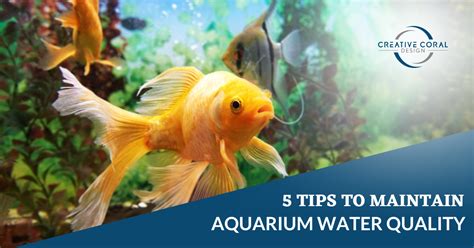Introduction
Aquarium ecosystems are complex and delicate. Maintaining optimal water quality is essential for the health and well-being of aquatic organisms. This article outlines the latest 2025 standards for aquarium water quality, providing insights into the crucial parameters and their recommended levels.

Parameters and Standards
The following table summarizes key aquarium water quality parameters and their corresponding 2025 standards:
| Parameter | 2025 Standard |
|---|---|
| Temperature | 75-80°F (24-27°C) |
| pH | 6.5-7.5 |
| Ammonia | <0.5 ppm |
| Nitrite | <0.2 ppm |
| Nitrate | <20 ppm |
| Dissolved Oxygen (DO) | 5-8 ppm |
| Alkalinity (KH) | 80-120 ppm |
| Hardness (GH) | 100-200 ppm |
Importance
Maintaining optimal water quality matters for several reasons:
- Animal Health: High levels of pollutants like ammonia and nitrite can stress and damage fish, leading to increased susceptibility to diseases.
- Plant Growth: Proper pH and nutrient levels are crucial for aquatic plant growth, providing shelter and food sources for organisms.
- Ecosystem Balance: The nitrogen cycle, which converts ammonia to nitrate, is essential for maintaining water quality. Proper conditions ensure this cycle functions efficiently.
Benefits of Maintaining Standards
Adhering to aquarium water quality standards offers numerous benefits:
- Healthy Fish: Optimal water conditions reduce stress, improve immunity, and prevent disease outbreaks.
- Vibrant Plants: Well-maintained water ensures healthy plant growth, adding aesthetics and providing natural filtration.
- Balanced Ecosystem: Proper water quality fosters a stable and thriving aquarium ecosystem where organisms can coexist harmoniously.
Comparisons with Previous Standards
The 2025 standards differ slightly from those established in previous years:
| Parameter | 2025 Standard | Previous Standard |
|---|---|---|
| Ammonia | <0.5 ppm | <1.0 ppm |
| Nitrate | <20 ppm | <30 ppm |
| DO | 5-8 ppm | 4-6 ppm |
| KH | 80-120 ppm | 60-100 ppm |
Tips and Tricks
- Use a water testing kit to monitor water quality parameters regularly.
- Perform partial water changes (20-25%) every 1-2 weeks to remove pollutants.
- Establish a beneficial bacteria colony in the filter to help break down toxins.
- Avoid overfeeding to minimize ammonia production.
- Provide adequate aeration to ensure sufficient DO levels.
Why It Matters
Neglecting aquarium water quality standards can lead to a cascade of detrimental effects:
- Fish Mortality: High levels of pollutants can kill fish outright or make them vulnerable to diseases.
- Stunted Growth: Inadequate water conditions can hinder fish and plant growth, leading to stunted development.
- Algal Blooms: Excess nutrients can trigger algal blooms, disrupting the ecosystem and blocking sunlight for plants.
FAQs
1. How often should I test my aquarium water?
Answer: Test water parameters at least once a week, especially after water changes or adding new fish.
2. What is the ideal ammonia level for a fish tank?
Answer: Maintain ammonia levels below 0.5 ppm to prevent stress and health issues in fish.
3. Can I use tap water for my aquarium?
Answer: Tap water may contain chemicals harmful to fish. If using tap water, ensure it is treated with a water conditioner to remove chlorine and chloramine.
4. How can I improve DO levels in my aquarium?
Answer: Use an air pump or powerhead to increase water circulation and oxygenation. Additionally, add live plants to release oxygen through photosynthesis.
5. What is the importance of KH and GH in aquarium water?
Answer: KH (carbonate hardness) stabilizes pH levels, while GH (general hardness) provides essential minerals for fish and invertebrates.
6. How can I prevent algae growth in my aquarium?
Answer: Control algae growth by reducing nutrient levels through regular water changes, avoiding overfeeding, and implementing blackout periods to limit photosynthesis.
Case Detail
Case Study: Nitrate Levels and Fish Health
A study conducted by the University of California, Davis, found that elevated nitrate levels (>20 ppm) in aquarium water can impair fish immune function and increase susceptibility to diseases. The study demonstrated the importance of maintaining nitrate levels within the recommended 2025 standards to ensure optimal fish health.
Market Insights
The global aquarium water quality testing market is projected to reach $1.3 billion by 2026, driven by increasing awareness of the importance of water quality and technological advancements in testing equipment. The advent of smart water testing devices and remote monitoring systems offers convenience and real-time data for aquarium hobbyists.
Conclusion
Maintaining aquarium water quality standards is essential for the health of aquatic organisms, the stability of the ecosystem, and the overall enjoyment of aquarium keeping. The 2025 standards provide comprehensive guidelines for key water quality parameters. By adhering to these standards, aquarium enthusiasts can create a thriving and balanced environment for their aquatic pets.





















